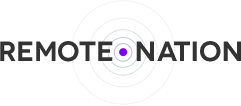Hi Brian, thanks for taking some time to chat with Remote Nation. Tell us a little about yourself and your remote working situation.
How long have you been working remotely?
Since June of 2011. Well, let me clarify: I’ve been working at Fullstack since June 2011, but when I started I worked out of the main office in Iowa City. The first time that I truly worked remotely was right around Thanksgiving 2011. I worked out of Clarksville, Missouri because we were visiting family in Louisiana, Missouri, and Clarksville had the closest cafe with Internet.
Tell us about your typical work day.
I get up at 6:00 PST every day and get to work by 7:00, which is a change from my time schedule when I worked out of Iowa [when I got into the office around 8:00]. It’s nice to be on by 7:00 because I know that I will get at least an hour or two in before the East coast heads to lunch. The most constant thing in my morning ritual is coffee, but I also try to take 10 minutes at the beginning of the day to just write some code for fun or just write in general. It’s like the first pancake: I burn something that doesn’t matter to kind of get the juices flowing.
Why did you choose to work remotely?
It was a combination of just wanting to work at Fullstack, regardless of the fact that it was a completely remote company, and also at the time I knew that I wasn’t planning on staying in Iowa for more than another year or two. At my previous job, they had bad experiences with people working remotely which I think was more a comment on the job than remote work in general.
Other than your home/office, where else have you worked from?
Co-working spaces have been the best experience since they tend to be more reliable than your average coffee shop. Sometimes [cafe wireless] just cuts out, and then it’s not a conducive place for work.
What is the biggest benefit to working remotely? Biggest challenge?
I think the biggest benefit is that I feel extremely comfortable in my work environment. I don’t work in the nude or anything: I still try to treat it like a ‘job’, otherwise I don’t think I would take my job seriously. I know exactly what is around me—it’s hard to describe the feeling. I know that if I need to focus, I can. I can be very intentional about my environment.
As for challenges, there is nothing like a water cooler, so you don’t just happen to see someone and ask them how their weekend was. You have to be a little more deliberate about [getting to know people]. It’s not an obvious thing to do, especially when you first start working remotely. Communicating effectively in general is just a little more difficult when you have to either write something or speak but you can’t demonstrate or read body language.
When you are sitting with somebody in a meeting, you can look at them and most of the time you can tell if they’re frustrated, but when you’re on a call there could just be silence on the wire and you have no idea that they are sitting behind the screen steaming mad.
How do you minimize distractions while working from home/office?
There are two ways that I can get distracted. One of them is environmental factors. Right now the maintenance people are sawing stuff right outside of my apartment. It’s a little distracting and there’s not much I can do about that, but then there are other distractions which I might divide into two categories:
- Skype conversations which are potentially relevant to what I am doing, but sometimes I don’t want to have my attention taken. So I’ll be sensitive to that and twiddle with notification settings. Maybe I want a half hour of complete silence over Skype unless somebody talks to me directly. I’ll basically tell Skype to not pop up in my dock.
- If I find myself distracted by Twitter or my feeds, I try to use that distraction as a feedback mechanism. “Why am I tempted to look at this stuff?” Usually it’s because I either don’t want to do what I am currently doing or it’s just that I don’t know enough about what I am doing and I need to ask someone for guidance or clarification.
Which app could you not live without for remote working?
Google Docs. I use it in two ways that I find indispensable:
- As a really quick whiteboard that I can use on calls. I know there are probably actual apps that can act as whiteboards between several parties, but Google Docs is the lowest barrier to entry out of anything that I have seen. You can send anybody a link and they can edit it.
- As my own personal place to dump ideas—I just find it a good environment for writing. When I use it as a dumping ground, then I won’t necessarily share the document with anybody else. But if I do, there is no friction to sharing.
What do you wear to work?
Usually jeans and a sweater. I do wear slippers to work– ‘Slipper Driven Development.’–my feet might as well be comfortable. If I wore, like, PJs I don’t think that I would take my job very seriously.
Silence or music? Rdio or Spotify?
It really depends on the day. There are some days where I need to have music. I use Spotify.
Any pets that work with you?
I have a cat sleeping on my desk right now, his name is Cashmere.
Any advice you would give to others who are considering working remotely?
You’re not going to enjoy working remotely if you don’t already enjoy what you do in the office. Be aware of the additional work you’re going to have to put in to communicate effectively with all of your coworkers. That said, if you have the opportunity to try it out, I would really recommend doing it because there is not a great way to approximate it without actually doing it.
Thanks Brian!
It was nice catching up with Brian and getting some insights into his remote working story. I work with Brian pretty regularly, but it was nice to hear how he runs things out in San Francisco.
Keep tabs on Brian and follow him at twitter.com/bcobb















